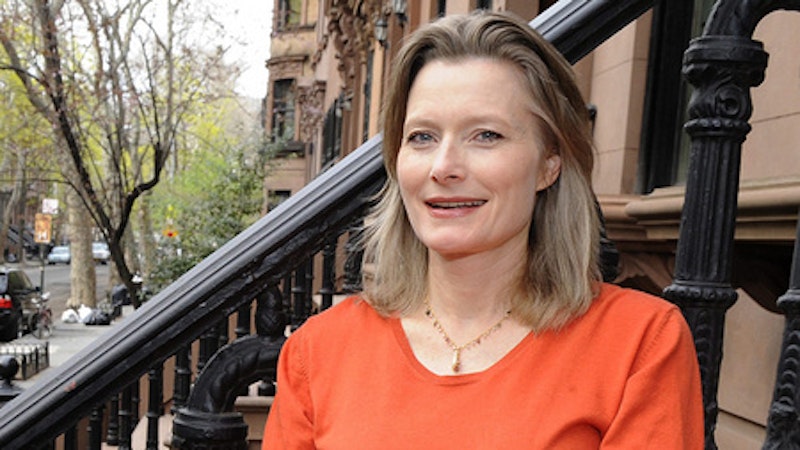Jennifer Egan may have destroyed storytelling. May 29 marked
the midpoint of her new story "Black Box," which is being published in
one-hour, serialized chunks every evening between eight and nine, under the
auspices of The New Yorker. her Twitter experiment feels unsettling to read, to the hands and in the eyes. Egan,
winner of the Pulitzer Prize for 2010's A Visit From The Goon Squad, takes her aesthetically conscious work to a
level that can only be described as compulsively frustrating.
Two forms that can begin to help understand the Twitter
aesthetic are Japanese poetry and Egyptian hieroglyphic. traditional Japanese
reads top to bottom and right to left. a reader will begin at the top-right of
the page, read down the column, and transition to the right to begin the next
column. The scribes writing in cairo a few thousand years ago determined their
syntactical direction based on visual symmetry. a reader would know what
direction to read based on whether a hieroglyphic pointed left or right. Line
breaks were indicated by dividing gridlines that dictated the length of each
line.
The temporal inversion that Twitter creates forces the reader
to read from the bottom up. this hardly gives a reader a pause in the
disjointed, albeit interesting, updates of Salman Rushdie or Buzz Bissinger
announcing a gig or his profanity-laced rants on the death of the book
industry. However, the sequential narrative effect of english nearly evaporates
into a soup of the past, the present, and the future.
Attempting to read the first page of Huckleberry Finn from bottom up adds up to a painstaking sobriety
test. It can be deconstructed and reorganized backwards into something that
looks like this:
"Aunt Polly-Tom's Aunt Polly, she is- and Mary, and the Widow Douglas is all told about that in book, which is mostly a true book, with some
stretchers, as i said before. I never seen anybody but lied one time or
another, without it was Aunt Polly, or the window, or maybe Mary. that is
nothing. There was things which he stretched, but mainly he told the truth. That book was made by Mr. Mark Twain, and he told the truth, mainly. You don't
know about me without you have read a book by the name of The Adventures of Tom Sawyer, but that ain't no matter."
The gist remains, but the paragraph shifts the focus from a
familiarity with Huck from Tom Sawyer into
a garbled bit of non-sequiturs. Time begets logic, and logic begets
understanding. storytelling as it is commonly understood depends on the
temporal relationship, and readers of english and other western languages come
to understand that relationship, expect that relationship, and find meaning in
that relationship that extends out of stories and into their daily lives.
Even transformational forms such as Pulp Fiction relied on this aesthetic in the micro-narratives that
comprised its fractured plot. each short film moved forward and could
ultimately be puzzled back into a linear narrative.
Egan's story does not have the
same constraints. the first six tweets of the story read:
People rarely
look the way you expect them
to, even when you've seen pictures.
The first thirty
seconds in a person's
presence are the most important.
If you're having
trouble perceiving and
projecting, focus on projecting.
Necessary
ingredients for a successful
projection: giggles; bare legs; shyness.
The goal is to be
both irresistible and
invisible.
When you succeed,
a certain sharpness
will go out of his eyes.
However, when opening The New Yorker's Twitter feed for
"The Black Box" Egan's story reads:
When you succeed,
a certain sharpness
will go out of his eyes.
The goal is to be
both irresistible and
invisible.
Necessary
ingredients for a successful
projection: giggles; bare legs; shyness.
If you're having
trouble perceiving and
projecting, focus on projecting.
The first thirty
seconds in a person's
presence are the most important.
People rarely
look the way you expect them
to, even when you've seen pictures.
The experience does not change. the order of the sentences
ceases to hold any significance. In fact, it would not be odd to expect a
certain portion of Egan's audience to read the entire 8500-word story
backwards. Some commentary has described Wgan's work as a departure from the
form of the short story and hastily dumped The Black Box into the same category as Homeric epics and The Canterbury Tales. Egan's work does have a lyrical nature to it
due to the character limitations that Twitter imposes, but any sense of meter
is simply an illusion.
Her prose does have beautiful and poetic imagery. Egan
writes, "Holding still can sometimes prove more effective than actively searching." This line digs to the central frustration of Twitter as a medium for
storytelling. between eight and nine at night each sentence lies there on the
screen for minutes before the next one arrives. In a story where the form that
diminishes the centrality of time reading the story in real time creates a
hyperawareness to it. There is a rush to click on the "1 new tweet" link and
get the next fix before anyone else has and to savor it for as long as you can
before moving past it and grabbing up another morsel.
Egan captured something with "Black Box" that extends well
beyond the story she chose to tell. Her story may help define the nature of
consuming a multidirectional narrative, and how those types of narratives exist
outside of the Twitterverse.
-Michael Hardiman can be followed on twitter @mghardiman.
From The Bottom Up
Jennifer Egan's latest story, "Black Box," pushes the boundaries of the Twitter aesthetic.

